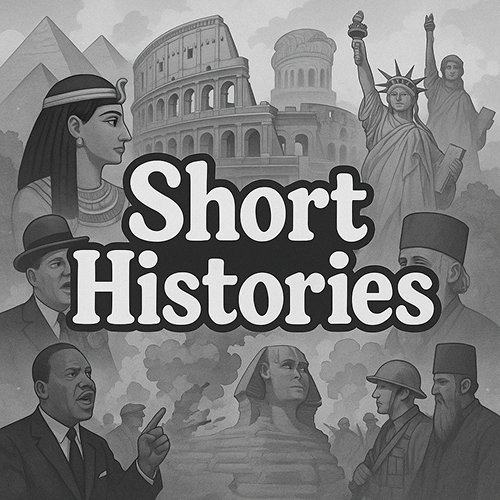The Origins: Brazil
Brazil, the largest nation in South America, is a land of astounding contrasts. Lush Amazonian rainforests, vibrant megacities,indigenous legacies, and colonial scars. From the arrival of Portuguese explorers in the 1500s to modern-day democracy, Brazil’s path has been one of profound transformation, shaped by resistance, resilience, and the rhythm of a diverse people. This is the story of a country that pulses with color, movement, and soul. The Land of Forests, Football, and Freedom.
Long before colonial contact, pre-Columbian Brazil was home to thousands of Indigenous groups, such as the Tupi, Guarani, Yanomami, and Kayapó, each with unique languages, cultures, and cosmologies. These communities lived in harmony with the land, practicing sustainable agriculture and maintaining complex social structures. Their ancestral presence laid the first human footprints across Brazil’s vast ecosystems.
In 1500, Pedro Álvares Cabral, a Portuguese navigator, landed on Brazil’s Atlantic coast, marking the start of European colonization. Unlike the silver-rich Andes or gold-laden Mexico, Brazil’s early draw was pau-brasil, a red dye-producing tree that gave the country its name. Over time, however, the colonial economy shifted toward sugarcane plantations, leading to one of the largest and most brutal forced migrations in history: the transatlantic slave trade.
Over 4 million Africans were brought to Brazil, more than to any other country in the Americas. Their cultural influence remains deeply embedded from capoeira and samba to Candomblé and Afro-Brazilian cuisine. Portuguese settlers, Indigenous groups, and African peoples mixed to form a complex and multicultural society but not without enduring profound inequality and exploitation.
In 1808, fleeing Napoleon’s invasion of Portugal, the Portuguese royal family relocated to Rio de Janeiro, making Brazil the only colony to serve as the seat of a European empire. This elevated Brazil's status and laid the groundwork for independence. In 1822, Dom Pedro I, the prince regent, declared Brazil’s independence from Portugal and became its first emperor.
Brazil’s Empire era lasted until 1889, during which it remained the only monarchy in the Americas. The abolition of slavery in 1888, the last country in the Western Hemisphere to do so, was a monumental yet delayed act. Just one year later, a military coup deposed the emperor and proclaimed the First Brazilian Republic.
The 20th century saw Brazil swing between democratic hopes and authoritarian rule. In 1930, Getúlio Vargas seized power, launching a populist era that expanded labor rights but suppressed dissent. Post-World War II democratic movements were quashed again by a military dictatorship that ruled from 1964 to 1985. Censorship, torture, and disappearances marked this dark chapter, though it also saw infrastructure expansion and economic nationalism.
With a return to democracy in the 1980s, Brazil drafted a new constitution in 1988 and began rebuilding civil society. Leaders like Luiz Inácio Lula da Silva and Dilma Rousseff rose to prominence, representing workers and marginalized groups. Yet Brazil’s modern era is rife with paradoxes, economic booms and recessions, anti-corruption crackdowns and political crises, environmental riches and ecological threats.
The Amazon rainforest, often called the “lungs of the Earth,” for it stores an estimated 150 to 200 billion tons of CO2 which helps to reduce the concentration of the greenhouse gas in the atmosphere and also produces approximately 20% of the world's oxygen. But it’s not just a natural wonder, it’s home to hundreds of Indigenous nations and endemic species. Logging, mining, and agricultural expansion have raised alarms internationally, even as environmentalists and Indigenous activists push back.
Culturally, Brazil remains a powerhouse. Its musics like bossa nova, samba, forró, and funk carioca move the world. Its literature, from Machado de Assis to Paulo Coelho, tells stories of inequality, love, and identity. Brazilian cuisine reflects its diversity: feijoada (a hearty black bean stew), acarajé (fried bean cakes from Bahia), moqueca (a seafood coconut stew), pão de queijo (cheese bread), and the globally loved brigadeiro.
And of course, there’s football (soccer for our American folks), a national obsession and unifying passion. Legends like Pelé, Zico, Romário, Ronaldo, and Neymar have made Brazil a five-time FIFA World Cup champion and a symbol of flair and skill on the global stage. The Brazilian style of football is often called "Samba Soccer" or "Ginga". Ginga is derived from the martial art Capoeira, it refers to the fluid, rhythmic, and skillful footwork and movement that characterizes most Brazilian players. It emphasizes individual flair, creativity, and a flowing, dance-like approach to the beautiful game.
Today, Brazil is the Giant of South America, a democratic federation of 26 states and over 200 million people. Its cities like São Paulo, Rio de Janeiro, Brasília, Salvador, and Recife showcase architectural marvels, urban dynamism, and deep inequality side by side. The country faces challenges from poverty and polarization to environmental crises but its culture, diversity, and energy offer a powerful foundation for progress.
This is Brazil, the land of forests and favelas, music and struggle, joy and defiance. A nation where freedom is not just a right but a rhythm.
Next Time: The Origins: India | Civilizations, Crowns, and the Call for Freedom
Home to the Indus Valley and the Vedas, shaped by Mughals and the Raj, India’s story is one of pluralism, partition, and the power of the people.
Please go back to top & scroll gently

